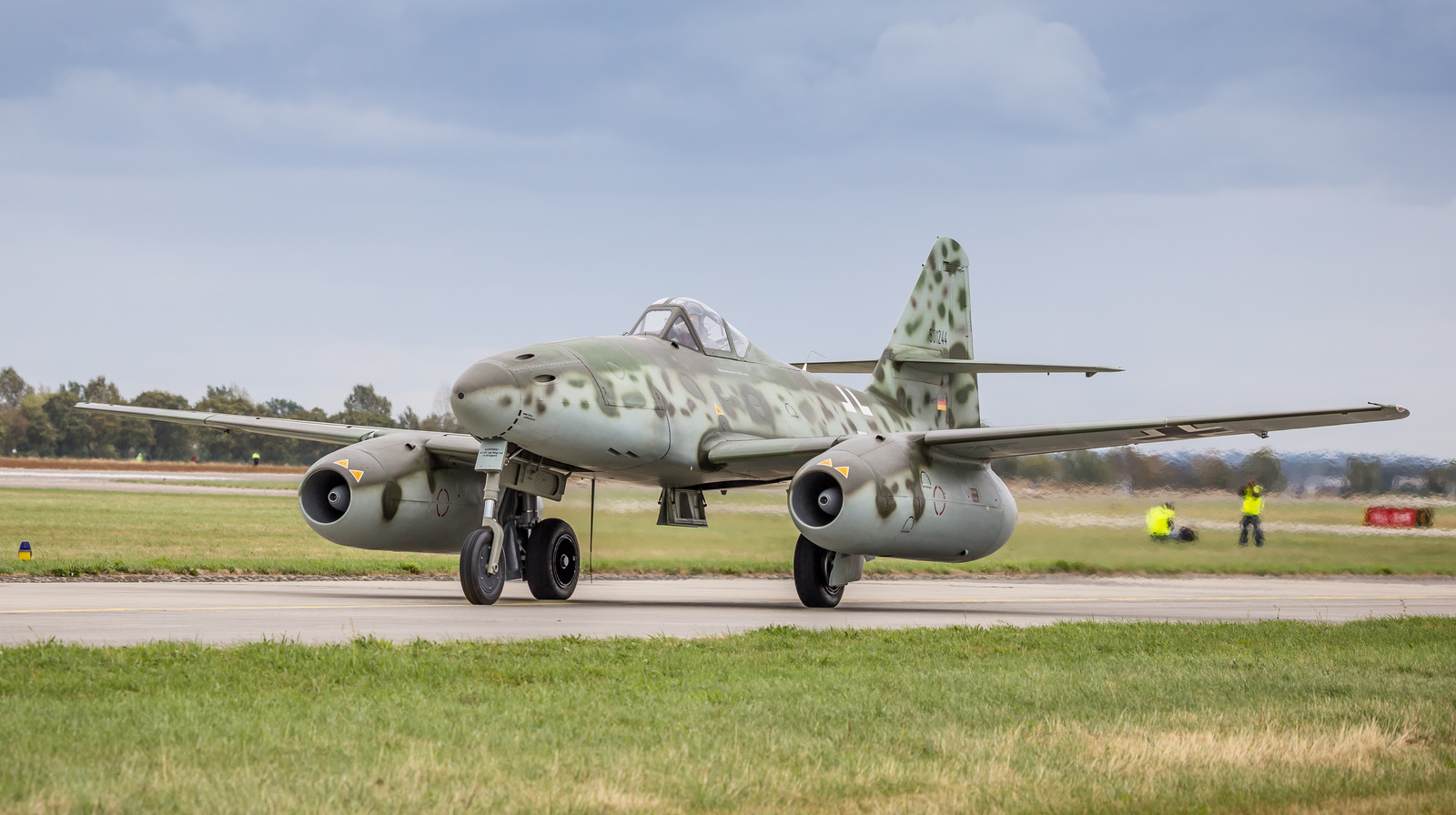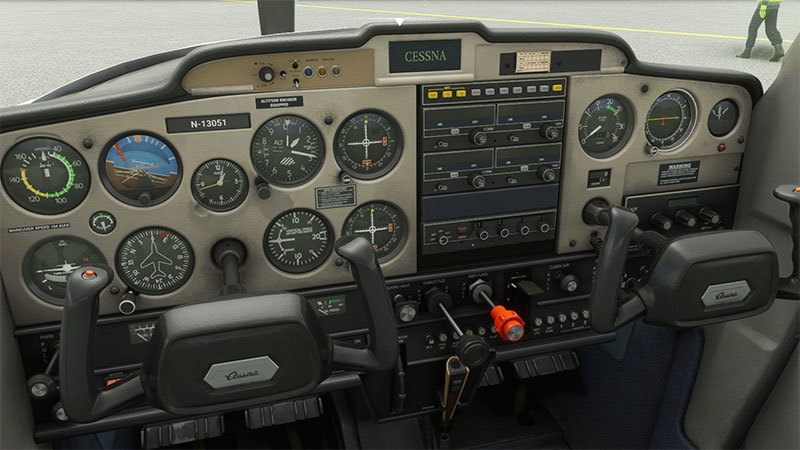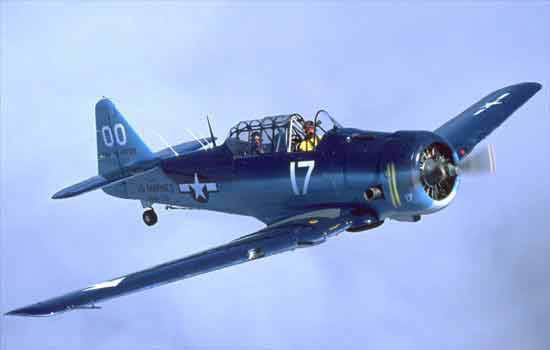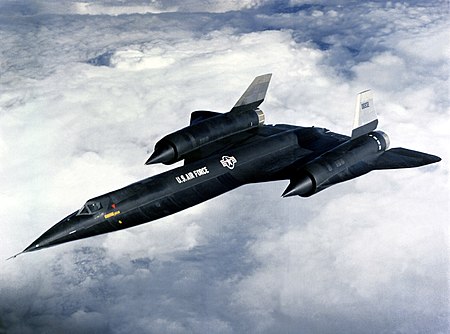The SR-71 flew from California to the GIUK gap and intercepted a TU-95 in under 3 hours.The SR-72 "Son of Blackbird": The Unmanned Hypersonic Jet Poised to Redefine Aerial Reconnaissance in 2025
...
While conventional turbojet and turbofan engines can provide sufficient power for takeoff and landing at subsonic speeds, they fall short in sustaining hypersonic velocities. Although there are jet engines capable of powering aircraft at hypersonic speeds, they are impractical for use during takeoff and landing. Consequently, the SR-72 necessitates an engine that can seamlessly handle both phases of flight.
Lockheed Martin’s Advanced Development Programs, famously known as “Skunk Works,” is the birthplace of the SR-72. This hypersonic demonstrator aircraft is part of an ambitious effort to dominate future warfare skies. The aircraft’s design foregoes the need for a human pilot, a revolutionary step that could fundamentally transform military aviation operations.
But the SR-72 is not merely about speed; its ability to carry and deploy hypersonic weapons at an unprecedented rate offers a formidable offensive capability. This platform, if it lives up to its potential, could reach targets or gather crucial intelligence across continents in mere hours. The SR-72 could travel from the US to Europe in around 90 minutes, creating new paradigms for rapid response and global surveillance.
...
MSN
www.msn.com
Navigation
Install the app
How to install the app on iOS
Follow along with the video below to see how to install our site as a web app on your home screen.

Note: This feature currently requires accessing the site using the built-in Safari browser.
More options
You are using an out of date browser. It may not display this or other websites correctly.
You should upgrade or use an alternative browser.
You should upgrade or use an alternative browser.
Hanger Tails(Tales) ~ Flying/Aviation
- Thread starter Stryder50
- Start date
Stryder50
Platinum Member
Stryder50
Platinum Member
Stryder50
Platinum Member
- Thread starter
- #145
Clickbaitish article~link; but a couple of good images and covers the gist;
Messerschmidt Me 262: Why Did It Fail?

 www.slashgear.com
www.slashgear.com
Messerschmidt Me 262: Why Did It Fail?

Messerschmitt Me 262: Why Did It Fail? - SlashGear
The Luftwaffe's Messerschmitt Me 262 was a unique aircraft, but it didn't ultimately make a difference in WWII's outcome.
Stryder50
Platinum Member
- Thread starter
- #146
As with many such 'Lists', perhaps a bit subjective. Still, worth some consideration and/or discussion. One fascinating aspect is how far China has come in just under a century. Back in the 1930s China had no "native" aviation industry and what little there was, had been imported from Italy, Germany, Russia, and the USA. Now there are some impressive designs in use from China's generation, admittedly with a lot of "theft" of ideas, concepts, and tech from the rest of the world during the past few decades. Still a rather impressive bit of "catch up".
12 Best Fighter Jets In The World In 2023
Read More: 12 Best Fighter Jets In The World In 2023 - SlashGear
......
Further down on this link are;
'10 significant drones'
and
'Tech from 2021 that has been major changes to our lives.'
12 Best Fighter Jets In The World In 2023
Read More: 12 Best Fighter Jets In The World In 2023 - SlashGear
......
Further down on this link are;
'10 significant drones'
and
'Tech from 2021 that has been major changes to our lives.'
Grumpyolman
Gold Member
I'm not a licensed pilot. I do have about 18 hours in a Cessna 152. Unfortunately, like many, I ran out of cash to solo and complete my pilots license. Family issues are more important.
I have actually flown some interesting vintage aircraft, including a 1929 Travel Air biplane, and was able to do some stalls and "attack" a fishing boat. (I wonder if those guys were scared or just thought they were in the Twilight Zone?)
Also an SNJ/T-6 WWII training plane- very fast. At speed, every movement of the stick can be felt in the stomach. Intensely cool.
Anyway, now I just fly a computer with Microsoft Flight Simulator 2020, which has, with a few add-ons, a really good Cessna 152. Which I consider "my" airplane.
e.

I have actually flown some interesting vintage aircraft, including a 1929 Travel Air biplane, and was able to do some stalls and "attack" a fishing boat. (I wonder if those guys were scared or just thought they were in the Twilight Zone?)

Also an SNJ/T-6 WWII training plane- very fast. At speed, every movement of the stick can be felt in the stomach. Intensely cool.
Anyway, now I just fly a computer with Microsoft Flight Simulator 2020, which has, with a few add-ons, a really good Cessna 152. Which I consider "my" airplane.
e.

Stryder50
Platinum Member
- Thread starter
- #148
Happened shortly after take-off and was able to return quickly to Miami;
Atlas Air Boeing 747-8 Catches Fire Mid-Air
Alternate source/article;
Atlas Air Boeing 747-8 Catches Fire Mid-Air
One moment, please...
libertyonenews.com
Alternate source/article;
Last edited:
Stryder50
Platinum Member
- Thread starter
- #149
Link to my search-page on this aircraft. For reference to other related article links;The SR-72 "Son of Blackbird": The Unmanned Hypersonic Jet Poised to Redefine Aerial Reconnaissance in 2025
...
While conventional turbojet and turbofan engines can provide sufficient power for takeoff and landing at subsonic speeds, they fall short in sustaining hypersonic velocities. Although there are jet engines capable of powering aircraft at hypersonic speeds, they are impractical for use during takeoff and landing. Consequently, the SR-72 necessitates an engine that can seamlessly handle both phases of flight.
Lockheed Martin’s Advanced Development Programs, famously known as “Skunk Works,” is the birthplace of the SR-72. This hypersonic demonstrator aircraft is part of an ambitious effort to dominate future warfare skies. The aircraft’s design foregoes the need for a human pilot, a revolutionary step that could fundamentally transform military aviation operations.
But the SR-72 is not merely about speed; its ability to carry and deploy hypersonic weapons at an unprecedented rate offers a formidable offensive capability. This platform, if it lives up to its potential, could reach targets or gather crucial intelligence across continents in mere hours. The SR-72 could travel from the US to Europe in around 90 minutes, creating new paradigms for rapid response and global surveillance.
...
MSN
www.msn.com

lockheed martin sr-72 - Bing
Intelligent search from Bing makes it easier to quickly find what you’re looking for and rewards you.
Which T6 did you fly in? I have almost 500 hours in the type.I'm not a licensed pilot. I do have about 18 hours in a Cessna 152. Unfortunately, like many, I ran out of cash to solo and complete my pilots license. Family issues are more important.
I have actually flown some interesting vintage aircraft, including a 1929 Travel Air biplane, and was able to do some stalls and "attack" a fishing boat. (I wonder if those guys were scared or just thought they were in the Twilight Zone?)
Also an SNJ/T-6 WWII training plane- very fast. At speed, every movement of the stick can be felt in the stomach. Intensely cool.
Anyway, now I just fly a computer with Microsoft Flight Simulator 2020, which has, with a few add-ons, a really good Cessna 152. Which I consider "my" airplane.
e.
Grumpyolman
Gold Member
Which T6 did you fly in? I have almost 500 hours in the type.
Here's a pic of the plane. It was a good ride, the guy in the front seat did some loops and rolls- fantastic!

Stryder50
Platinum Member
- Thread starter
- #152
Recently got this shirt, it's a kick. One of my cats happens to be a gray tabby. Got a couple more for my youngest son and his teen age son.

Got it from this on-line/mail-order place.
 www.wright-bros.com
www.wright-bros.com
They offer an interesting selection of aviation theme merchandise, apparel, gear, etc.

Got it from this on-line/mail-order place.
Sporty's Wright Bros. Collection - Home Page
They offer an interesting selection of aviation theme merchandise, apparel, gear, etc.
Stryder50
Platinum Member
- Thread starter
- #153
Confessions Of An E-2C Hawkeye Radar Operator
The life of the often overlooked “quarterback” of the air wing that goes to work in a dimly lit flying tube to coordinate chaotic air wars from above.
....
It may not be glamorous, but the largely misunderstood Grumman E-2 Hawkeye is arguably the most important aircraft deployed aboard America’s supercarriers. It acts as the high-flying eyes of the carrier strike group and provides critical air traffic control and combat management for carrier air wing aircraft, as well as communications relay and other functions. Retired Naval Flight Officer Craig “Slim” Picken worked in the inhospitable confines of the Hawkeye’s fuselage during one of the most interesting times in modern military history, rattling off intercept orders to missile-laden Tomcats and coordinating the ballet of U.S. Navy carrier-borne tactical aircraft as they plied their deadly trade over Iraq.
So come with us as we follow “Slim” into the tight confines of the Hawkeye’s belly, take a seat alongside him in front of one of the glowing radar consoles and get ready to get to catapult off on a voyage that will make you understand the Navy’s vaunted airborne early warning and control plane like never before.
The Reality
Had Top Gun filmmakers been accurate in their account, the opening scene with Maverick would have been handled completely differently.
Under the powerful radar and watchful eyes of its crew, the E-2 Hawkeye, flying at 27,000 feet, would have spotted the incoming “bogeys” from more than 150 miles away. Maverick’s Tomcat would have been quarterbacked with a real-time picture, accompanied with data-link updates and a familiar voice helping with the “target sorts.”
A surprise 2nd bogey? Not a chance!
Cougar wouldn’t have been jumped and would have kept his wings to fight another day.
Today, the entire dogfight might have be quarterbacked by the E-2 without its controllers even saying a word.
....
:extract_focal()/https%3A%2F%2Fpocket-syndicated-images.s3.amazonaws.com%2Farticles%2F8590%2F1686251176_hawkeyeradaroperator.jpg)
Confessions Of An E-2C Hawkeye Radar Operator
The life of the often overlooked “quarterback” of the air wing that goes to work in a dimly lit flying tube to coordinate chaotic air wars from above.
This might also go into another thread on aircraft carriers.
Stryder50
Platinum Member
- Thread starter
- #154
The title obscures that the crash site was found by authorities(CIA) within a couple of days, as well as the dead pilot. Still, an interesting read.
:extract_focal()/https%3A%2F%2Fpocket-syndicated-images.s3.amazonaws.com%2Farticles%2F8166%2F1662154262_63126903ed7ba.png)
 getpocket.com
........
getpocket.com
........

A CIA Spyplane Crashed Outside Area 51 a Half-Century Ago. This Explorer Found It.
How urban explorers uncovered the site—and the memory—of a covert Cold War–era accident.
:extract_focal()/https%3A%2F%2Fpocket-syndicated-images.s3.amazonaws.com%2Farticles%2F8166%2F1662154262_63126903ed7ba.png)
A CIA Spyplane Crashed Outside Area 51 a Half-Century Ago. This Explorer Found It.
How urban explorers uncovered the site—and the memory—of a covert Cold War–era accident.
Lockheed A-12 - Wikipedia

Stryder50
Platinum Member
- Thread starter
- #155
Just How Fast Is Mach 10 in Top Gun?
...Mach is a unit of speed commonly used in aviation. Mach is a measurement of an object's speed relative to the speed of sound — 760 miles per hour at sea level. The inclusion of sea level is important as factors like humidity and the atmosphere cause the speed of sound to be reduced with greater altitude. The standard fighter jets used by the American military — like the Falcon F15 — have an average top speed of around Mach 2.5 (1900mph).
As mentioned previously, altitude drastically affects the speed of sound, and Maverick takes the Darkstar to an altitude of around 80,000 feet. At that height, the speed of sound reduces significantly to around 660mph. If none of that made any sense to you, a reductionist way of looking at Mach speed is stating that Mach 1 is roughly 760 mph at sea level, and 660mph during the Darkstar test in Top Gun: Maverick. Therefore, each time the Mach counter in the Darkstar goes up by 0.1, you add 66mph.
Mach is a unit of speed commonly used in aviation. Mach is a measurement of an object's speed relative to the speed of sound — 760 miles per hour at sea level. The inclusion of sea level is important as factors like humidity and the atmosphere cause the speed of sound to be reduced with greater altitude. The standard fighter jets used by the American military — like the Falcon F15 — have an average top speed of around Mach 2.5 (1900mph).
As mentioned previously, altitude drastically affects the speed of sound, and Maverick takes the Darkstar to an altitude of around 80,000 feet. At that height, the speed of sound reduces significantly to around 660mph. If none of that made any sense to you, a reductionist way of looking at Mach speed is stating that Mach 1 is roughly 760 mph at sea level, and 660mph during the Darkstar test in Top Gun: Maverick. Therefore, each time the Mach counter in the Darkstar goes up by 0.1, you add 66mph.
Can a Human Survive Mach 10
In Top Gun: Maverick, Maverick doesn't just achieve Mach 10, he pushes the Darkstar beyond its limits and hits Mach 10.2 before the aircraft disintegrates (as it probably would have before hitting Mach 10 in real life). However, it's almost a guarantee that Maverick would have blacked out long ago and certainly would have died from heart failure and brain death.
The average human can withstand forces of around 4.6g for a few seconds, with trained fighter pilots capable of withstanding 9g for one or two seconds before blacking out. The Darkstar flying at Mach 10 would roughly achieve a force of 34g, which is almost guaranteed to kill a human. Of course, this is all theoretical, as the effects of 34g have never been officially tested, but the theory can be deduced from the effects of lower g forces on the human body.
High g forces can have a destructive effect on the human cardiovascular system. The intense force strains the heart's ability to pump blood around the body. Not only does this strain the heart directly, but the reduced blood supply to the brain would cause the person to black out within seconds. Prolonged blood restriction would cause irreparable damage to the brain, eventually resulting in death. Not only would the prolonged g force kill the pilot, but the blackout would likely result in a loss of control of the aircraft, and lead to a fatal accident before that is possible.
...
MSN
www.msn.com
Stryder50
Platinum Member
- Thread starter
- #156
here's another variation ...


 www.wright-bros.com
www.wright-bros.com


Top Dog T-Shirt
Earning top ranks in his flight training class, this Top Dog “Shep the Aviator” is thrilled to have earned his wings! T-Shirt features a relaxed fit and has reinforced double-stitching on all seams.
Just How Fast Is Mach 10 in Top Gun?
...
Mach is a unit of speed commonly used in aviation. Mach is a measurement of an object's speed relative to the speed of sound — 760 miles per hour at sea level. The inclusion of sea level is important as factors like humidity and the atmosphere cause the speed of sound to be reduced with greater altitude. The standard fighter jets used by the American military — like the Falcon F15 — have an average top speed of around Mach 2.5 (1900mph).
As mentioned previously, altitude drastically affects the speed of sound, and Maverick takes the Darkstar to an altitude of around 80,000 feet. At that height, the speed of sound reduces significantly to around 660mph. If none of that made any sense to you, a reductionist way of looking at Mach speed is stating that Mach 1 is roughly 760 mph at sea level, and 660mph during the Darkstar test in Top Gun: Maverick. Therefore, each time the Mach counter in the Darkstar goes up by 0.1, you add 66mph.
Mach is a unit of speed commonly used in aviation. Mach is a measurement of an object's speed relative to the speed of sound — 760 miles per hour at sea level. The inclusion of sea level is important as factors like humidity and the atmosphere cause the speed of sound to be reduced with greater altitude. The standard fighter jets used by the American military — like the Falcon F15 — have an average top speed of around Mach 2.5 (1900mph).
As mentioned previously, altitude drastically affects the speed of sound, and Maverick takes the Darkstar to an altitude of around 80,000 feet. At that height, the speed of sound reduces significantly to around 660mph. If none of that made any sense to you, a reductionist way of looking at Mach speed is stating that Mach 1 is roughly 760 mph at sea level, and 660mph during the Darkstar test in Top Gun: Maverick. Therefore, each time the Mach counter in the Darkstar goes up by 0.1, you add 66mph.
Can a Human Survive Mach 10
In Top Gun: Maverick, Maverick doesn't just achieve Mach 10, he pushes the Darkstar beyond its limits and hits Mach 10.2 before the aircraft disintegrates (as it probably would have before hitting Mach 10 in real life). However, it's almost a guarantee that Maverick would have blacked out long ago and certainly would have died from heart failure and brain death.
The average human can withstand forces of around 4.6g for a few seconds, with trained fighter pilots capable of withstanding 9g for one or two seconds before blacking out. The Darkstar flying at Mach 10 would roughly achieve a force of 34g, which is almost guaranteed to kill a human. Of course, this is all theoretical, as the effects of 34g have never been officially tested, but the theory can be deduced from the effects of lower g forces on the human body.
High g forces can have a destructive effect on the human cardiovascular system. The intense force strains the heart's ability to pump blood around the body. Not only does this strain the heart directly, but the reduced blood supply to the brain would cause the person to black out within seconds. Prolonged blood restriction would cause irreparable damage to the brain, eventually resulting in death. Not only would the prolonged g force kill the pilot, but the blackout would likely result in a loss of control of the aircraft, and lead to a fatal accident before that is possible.
...
MSN
www.msn.com
You only get 34g if the acceleration is ridiculously fast, like a missile launch. Aircraft take much more time to get to that velocity.
But your point about his surviving the disintegration is correct.
He would have been turned to paste.
Stryder50
Platinum Member
- Thread starter
- #158
Actually, not "my" point but that of the author of the linked article.You only get 34g if the acceleration is ridiculously fast, like a missile launch. Aircraft take much more time to get to that velocity.
But your point about his surviving the disintegration is correct.
He would have been turned to paste.
Ahhh, well the author needs to do some more homework.Actually, not "my" point but that of the author of the linked article.
Stryder50
Platinum Member
Similar threads
- Replies
- 22
- Views
- 3K
- Replies
- 4
- Views
- 1K
- Replies
- 11
- Views
- 1K
Latest Discussions
- Replies
- 0
- Views
- 1
- Replies
- 675
- Views
- 3K
- Replies
- 177
- Views
- 2K
Forum List
-
-
-
-
-
Political Satire 8058
-
-
-
-
-
-
-
-
-
-
-
-
-
-
-
-
-
-
-
ObamaCare 781
-
-
-
-
-
-
-
-
-
-
-
Member Usernotes 469
-
-
-
-
-
-
-
-
-
-
